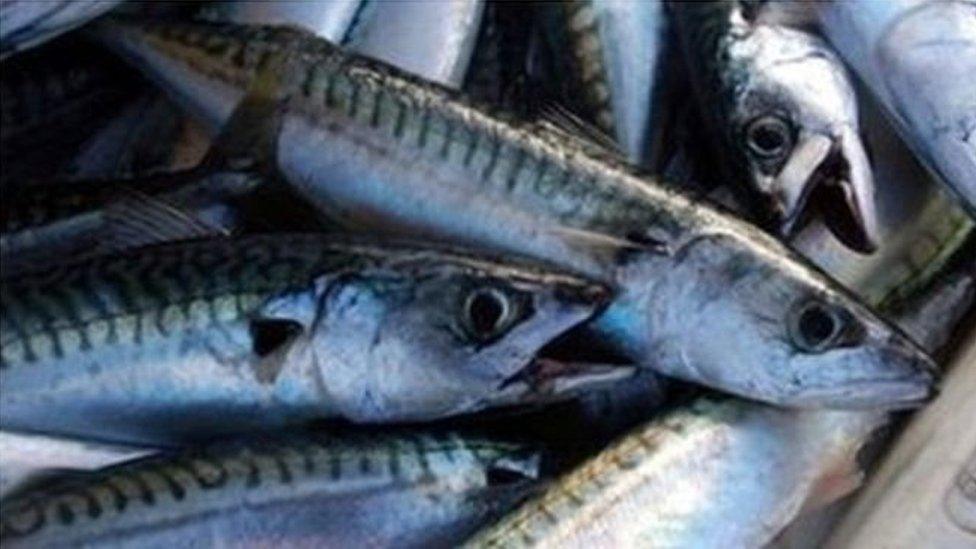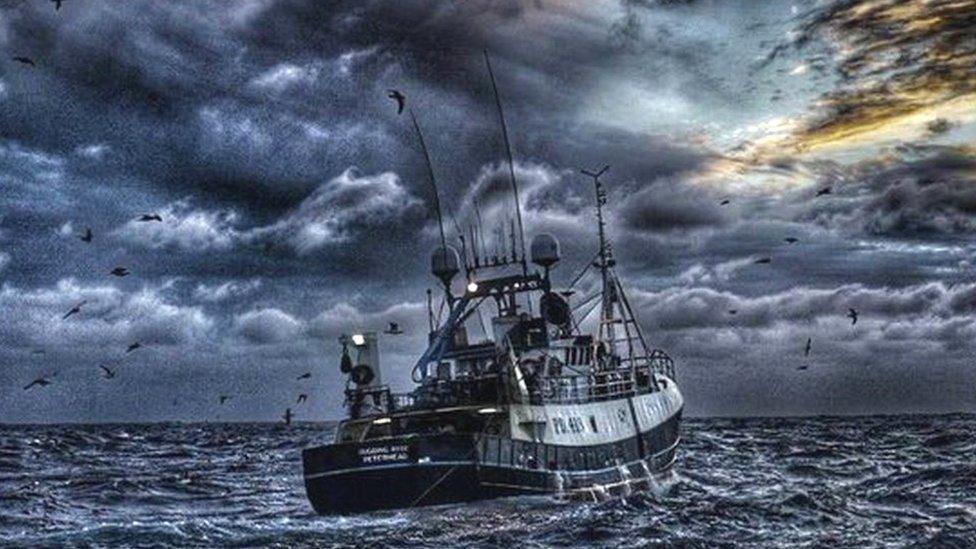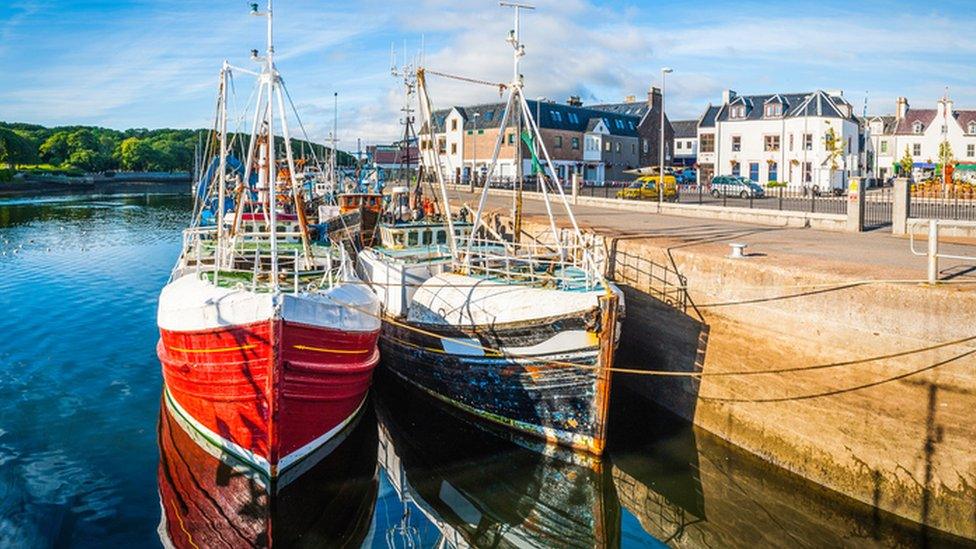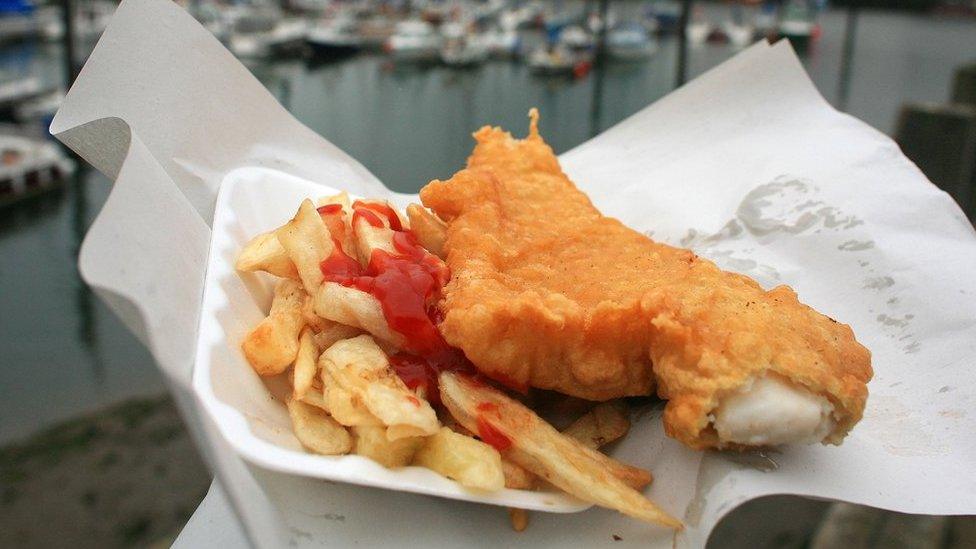Scottish fish landing tonnage rises but value falls
- Published

Mackerel remained the most valuable stock to the Scottish fleet last year, despite recording a fall in both tonnage and value
The value of fish landed by Scottish vessels fell slightly last year despite an increase in tonnage, according to official figures.
A total of 466,000 tonnes of sea fish and shellfish worth £560m were landed.
That represented a 3% year-on-year rise in tonnage but a 1% fall in real value.
Pelagic species - which include herring, mackerel and blue whiting - saw a 13% drop in value, to £197m, despite tonnage rising by 2% to 301,000 tonnes.
Scottish government statisticians, external attributed that rise to more landings of blue whiting, which is primarily caught for industrial use and attracts much lower prices.
The value and tonnage of mackerel both fell - by 6% and 5% respectively - but it remained the most valuable stock to the Scottish fleet, accounting for 29% (£162m) of the total value of fish landings.
Landings of demersal species - which include haddock, monkfish and cod - both increased in tonnage and value by 7%.
The tonnage of shellfish species fell by 2% to 63,000, while value climbed by 6% to almost £180m.
Lobster and langoustine remained the most valuable shellfish species to the Scottish fleet, accounting for 13% (£75m) of the total worth of all landings.
There were 2,065 active Scottish-registered fishing vessels in 2017 - 32 more than in 2016.
The number of fishers working on these vessels was just under 4,800, slightly fewer than there were in the previous year.
- Published1 July 2016

- Published10 May 2017

- Published17 March 2017
